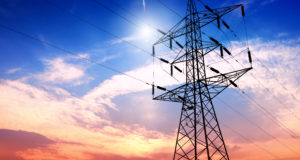Next to the refrigerator, no appliance in the home uses more energy over the course of a typical day than the hot-water heater. Hot water is one of those little luxuries of life that we have gotten so used to that we barely even notice it any more, except of course when we run out right in the middle of a long hot shower. But most people have come to rely on hot water for a multitude of purposes, and it would be hard to imagine how inconvenient our lives would suddenly become if we had to start heating water on the stove the old-fashioned way instead of having it available on demand twenty-four hours a day.
 But even if we have come to take hot water for granted, one thing we will never get used to is the amount of hard-earned money most of us are forced to shell out at the end of each month just to pay off our electricity bills. As a true energy hog, our hot-water heaters are contributing significantly to our overall electricity costs, and even if we are living off-the-grid, the energy-producing systems we use can be strained to the limit in part because of the amount of power we use to heat water to an acceptable level. And regardless of how and from where you are getting your electricity, here is something that you should find especially galling: approximately 80 to 90 percent of the energy you use to heat your water goes to waste. All of that precious heat your hot-water heater generates is literally going right down the drain, as only a fraction of it will actually be used to perform useful work in our showers, bathtubs, sinks, washing machines, and dishwashers.
But even if we have come to take hot water for granted, one thing we will never get used to is the amount of hard-earned money most of us are forced to shell out at the end of each month just to pay off our electricity bills. As a true energy hog, our hot-water heaters are contributing significantly to our overall electricity costs, and even if we are living off-the-grid, the energy-producing systems we use can be strained to the limit in part because of the amount of power we use to heat water to an acceptable level. And regardless of how and from where you are getting your electricity, here is something that you should find especially galling: approximately 80 to 90 percent of the energy you use to heat your water goes to waste. All of that precious heat your hot-water heater generates is literally going right down the drain, as only a fraction of it will actually be used to perform useful work in our showers, bathtubs, sinks, washing machines, and dishwashers.
How To Creating and Maintaining a Self-reliant Supply of Energy, Water, Shelter and More…
This situation is not inevitable, however. In fact, there is a simple yet ingenious technology available that will allow its users to extract excess heat from hot wastewater so it can be recycled and re-used to help cut down on your energy consumption costs. Drain-water heat recovery systems, as they are called, can be added to just about anyone’s plumbing installations, and if you are struggling to improve your energy efficiency while looking to cut down on your power usage, one of these handy set-ups could be the exact thing you need to make it all happen.
Drain-Water Heat Recovery to the Rescue!
Drain-water (or grey-water) heat recovery systems function as supplements to hot water heaters, which are normally forced to expend prodigious amounts of energy heating the cool water that flows into it them until it reaches the 120⁰-to-140⁰-Fahrenheit range. In itself, heating cool water is not a particularly efficient process, but when you factor in all the energy investment that flows down the drain whenever hot water faucets are opened and left to run, it is easy to see that we are talking about a system that gives us very little bang for the buck.
But a hot-water heat recovery set-up can change everything. In true what-goes-around-comes-around spirit, these systems work by transferring heat from wastewater to the cool water that is used to re-supply hot water heaters as they empty, which makes this technology a model of recycling efficiency. By working this neat little trick, it is estimated that a properly installed and maintained drain-water heat recovery arrangement can increase the capacity of a hot water heater by up to three times, while reducing energy usage in these units by anywhere from 30 to 50 percent. Experts estimate that this could allow homeowners to decrease their annual energy consumption by 5 to 10 percent, thereby cutting electricity costs by several hundred dollars a year for the typical American family. Drain-water systems are highly recommended for use with the kinds of solar water heaters that are frequently found on self-sufficient homesteads, which can make them ideal home addition for off-the-gridders looking to cut down on energy consumption in any way possible.
How They Work
Drain-water heat recovery systems come in two types: storage and non-storage. The latter are cheaper and easier to install, although they are not as efficient because they do not allow the heat from wastewater to be used when it comes from certain sources. With a non-storage unit, a part of the waste pipe under the shower drain is replaced with a gravity-film heat exchanger, which is a 3-to-4 inch diameter section of copper pipe that will run vertically beneath the shower stall or tub. This section will be wrapped tightly with a spiral-shaped length of ½-inch diameter copper tubing, through which the hot-water heater will be fed with a steady supply of cool water to replace the heated water as it gets used up. As hot wastewater moves through the heat exchanger, it will leave a thin film of hot water on the inside of the larger copper pipe, facilitating the transfer of heat to the copper tubing spiraling around its entire length. The fresh water traveling to the hot-water heater through this tubing is therefore preheated, significantly decreasing the amount of work that the water heater will have to perform in order to get the new water up to the proper temperature. Essentially, in a non-storage set-up, heat is recycled in a closed loop, going from showerhead to wastewater pipe to water heater to showerhead. It repeats this process over and over again until the water is turned off and the shower is finished.
A storage drain-water heat recovery system comes with a tank where a supply of fresh water is kept. In this case, the spiral tubing is wrapped around the bottom of the storage tank, and the hot wastewater from the drain is passed through this section of tubing so it can heat the water in the tank. The pipe that feeds the hot-water heater and supplies it with cool water is run through the storage tank, so whenever the water heater is refilling, it will be taking in fresh water that has already been partially heated inside the tank. While non-storage units require a contemporaneous continuous flow of cool water into a water heater in order to pass on the heat collected, with a storage unit wastewater heat can be collected and stored for future use. This means that dishwashers, washing machines, bathtubs, and anything else in the house that might produce hot wastewater on a periodic, non-continuous basis can be successfully hooked up to such a system.
The cost of a retail drain-water heat recovery system can range anywhere from $200 to perhaps as high as $1,000, but the Department of Energy has estimated that one of these units will pay for itself through savings on power bills in somewhere between two and seven years, depending on how much water is used in the household and, of course, on the initial expense of the system chosen. Most commercially available drain-water heat recovery set-ups are storage types, but because of the complexity of these systems, a plumber will have to be hired in most cases to install them, which obviously increases their cost even further. The non-storage variety is more appropriate for do-it-yourself types, as it is relatively simple to put in even for someone without previous plumbing experience. A DIY unit will of course cost less than something that must be bought whole and installed by a professional, and the fact that they are really only appropriate for use with showers may be perfectly fine in households that aren’t using a dishwasher or an on-site washing machine.
Discovering the Drain-Water System
While things will generally go much smoother if you install a drain-water heat recovery system in a house that is in the process of being constructed, retrofits are always possible. A large variety of commercial set-ups are now available, but a DIY project may also be an option for some enterprising souls, and this approach may appeal to those (including a significant segment of the off-the-grid community) who cannot afford the upfront costs of a more sophisticated storage tank system.
Drain-water heat recovery is not all that well known, which is a pity because the amount of savings on electricity costs that such a system can deliver is quite substantial. If you are a homeowner worried about energy efficiency, you owe it to yourself to check this technology out to see if it might be just the thing for you.
©2012 Off the Grid News
 Off The Grid News Better Ideas For Off The Grid Living
Off The Grid News Better Ideas For Off The Grid Living




